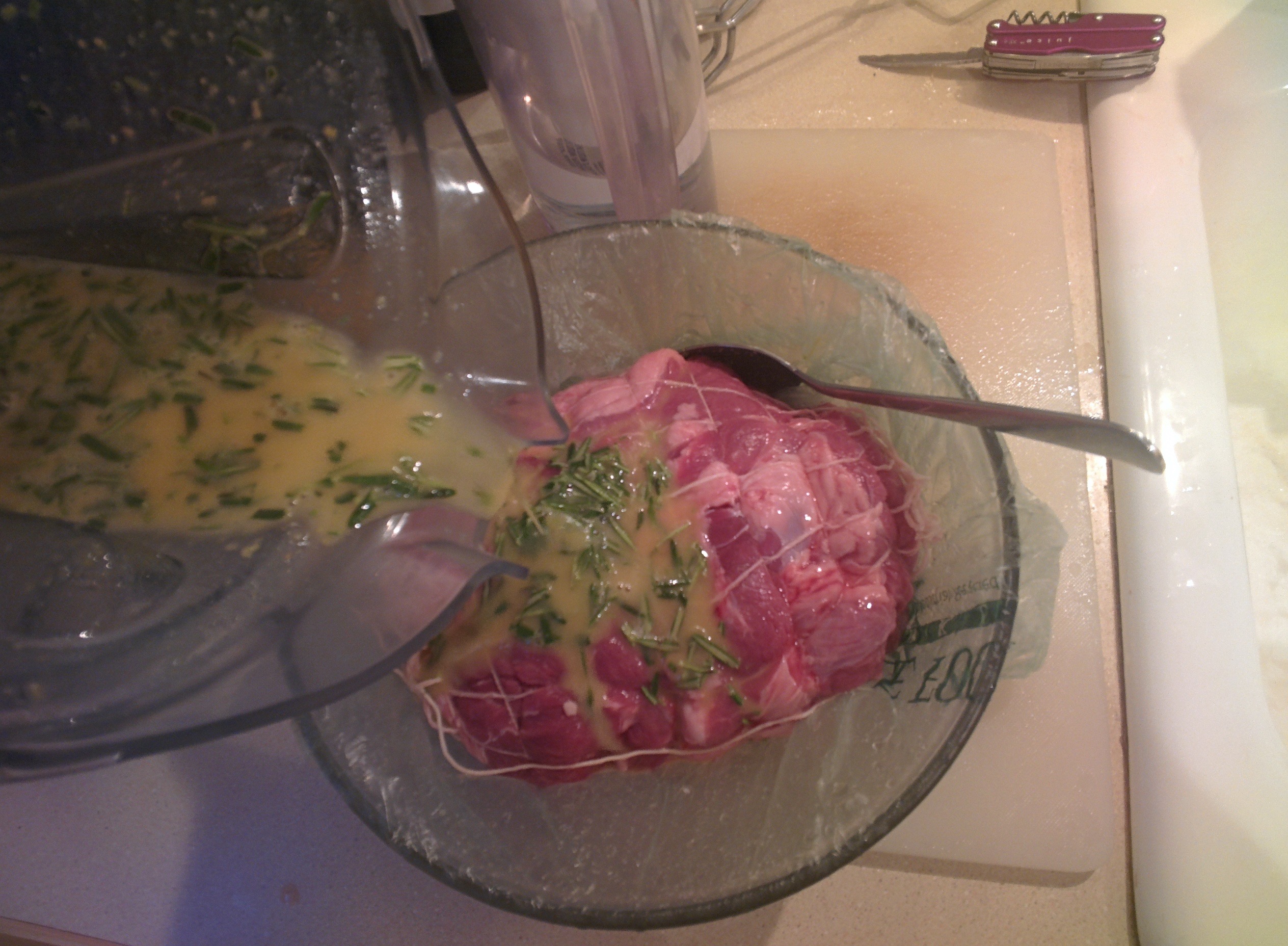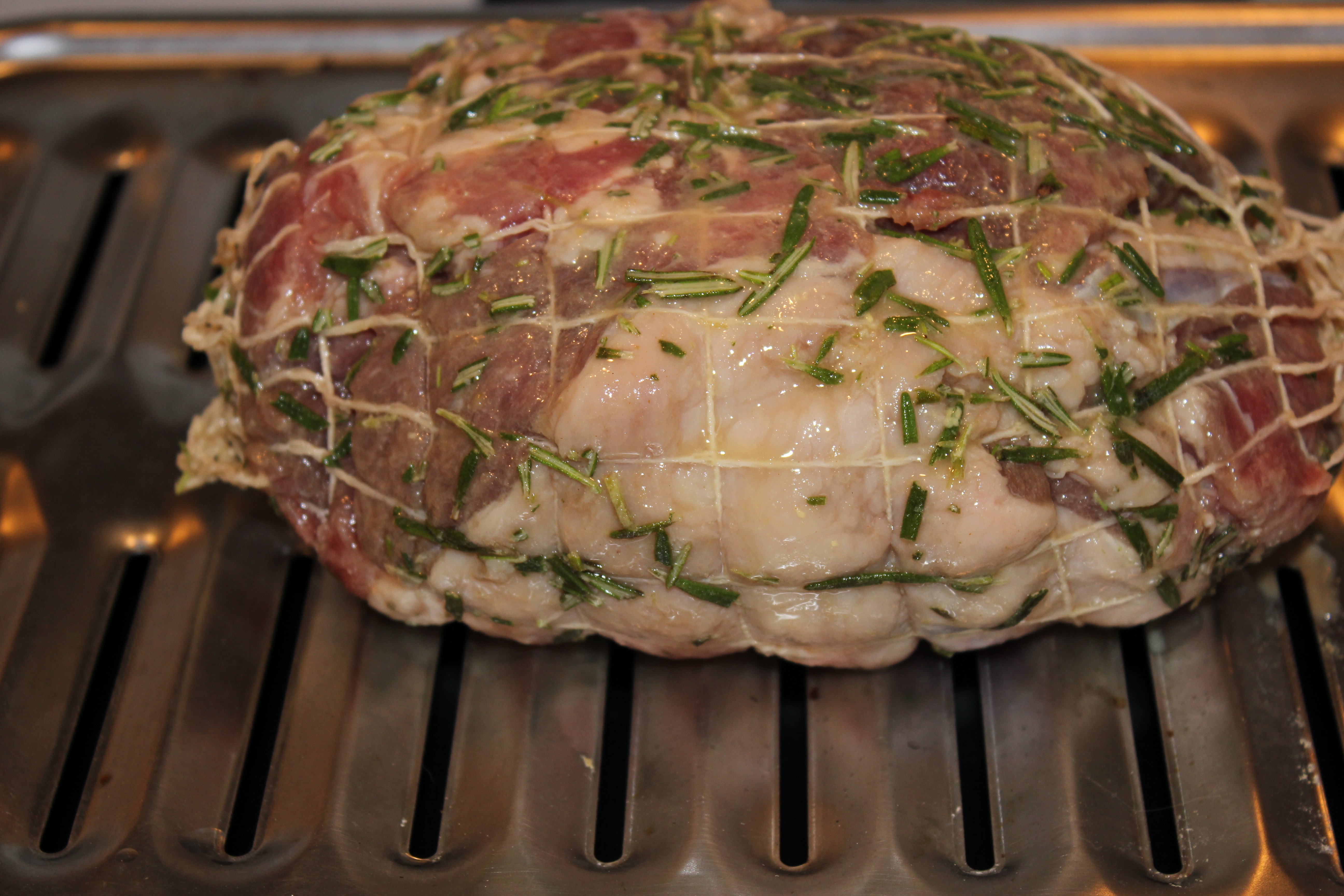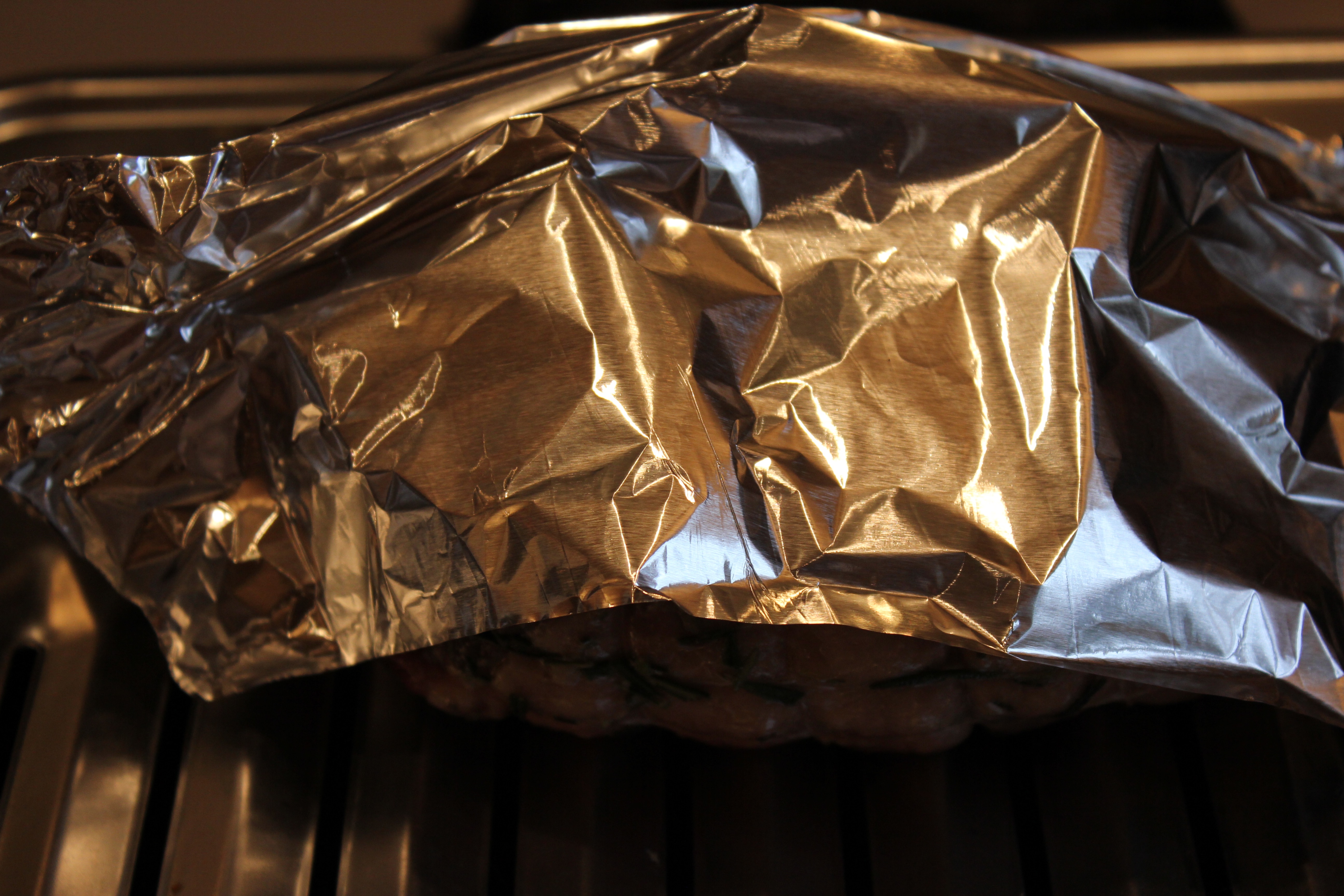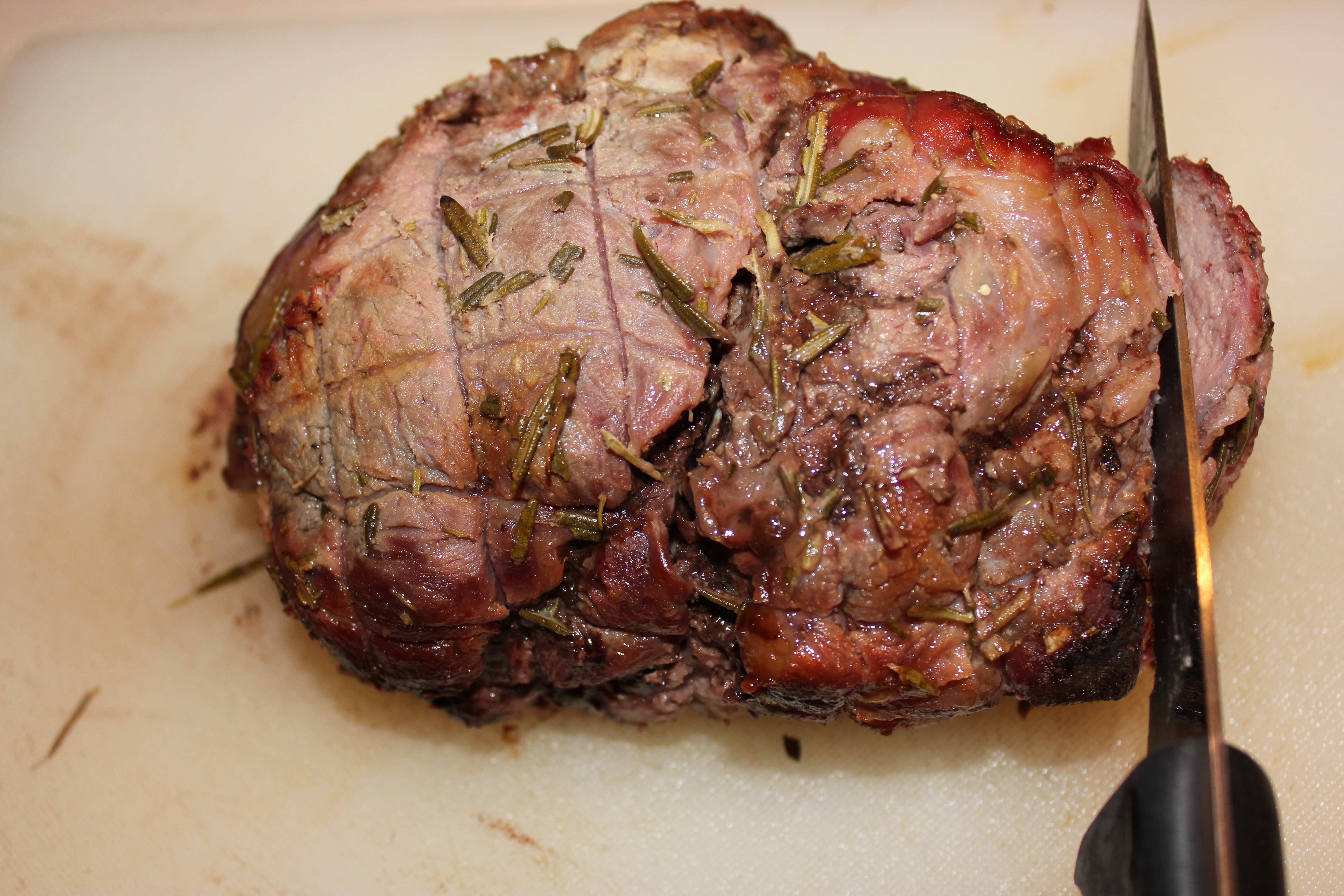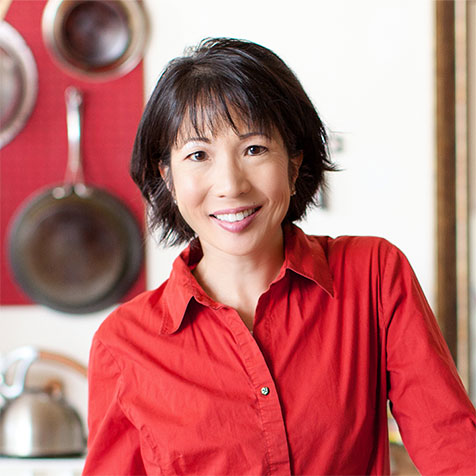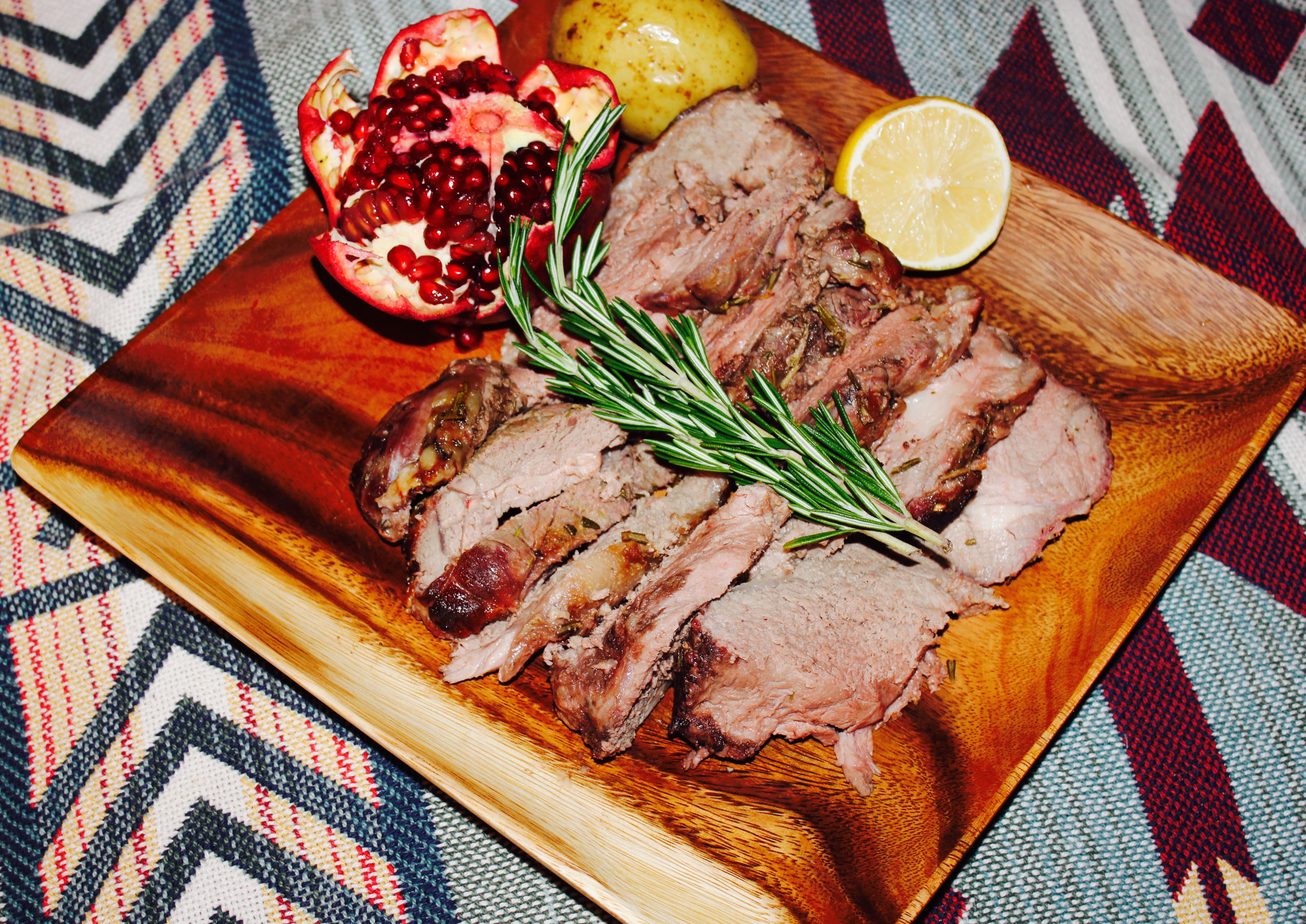
Lamb is a nutrient dense meat that usually gets overlooked at holiday time. Yet it’s ease for preparation and roasting could change your mind!
Thanksgiving Day is under a week away. I imagine most people living in the U.S. and abroad who celebrate this holiday have already made their holiday travel plans, Menus have been set. The turkey (or the Tofurkey) has been purchased, and the side dishes planned for a festive table of delightful foods.
Or not.
Until recently, the intensity of this food-centered holiday has been absolutely lost on the Sensible Celiac. My brain has stored far too many eating scenes that end up in the bathroom with a grumpy, upset tummy for up to several days. Partaking in food celebrations for the holiday table have involved flipping through magazines filled with photo spreads of flakey, baked goods, or examining the tiny flecks of vanilla bean in a dollop of ice cream as it melts on piece of apple pie. Yes, yes, yes, I know: food magazines and cooking shows have become a sort of pornography, of which there is a moment of exhilaration, followed by a sense of loss mixed with anger — all the things I can’t have, that are never quite as good, no matter how many magic gluten-free, allergen-free tweaks you make to it. If you beg to differ, just watch an episode of The Great British Baking Show, click on the episode where they make Baked Alaska, and attempt to bend your mind around making THAT gluten free, dairy free, soy free, corn free, nut free, and low sugar.
Uh, no. No no no no no no.
Yet with my focus on using naturally gluten-free foods and adding flavor instead of just subtracting ingredients, I find myself making food food again, flavor-filled again, simple and nutrient dense again. And best yet, no grumpy tummy.
When thinking about cooking a feature dish for a Thanksgiving Day meal, I found myself wandering away from the traditional turkey. Honestly, I am not fond of turkey for much more than an occasional homemade turkey and cranberry chutney sammich without the bread (President Obama’s sandwich of choice when he came to visit the Grand Central Bakery in 2010, which is located in my private practice office building), and typically I may only have turkey one time a year, if someone else has prepared it without stuffing inside the bird. People baste the bird, season it, slow roast it, and meticulously watch their turkey in the oven more carefully than a brand new baby — and, it just doesn’t ever wow me.
And so, I return to my spiel: eat nutrient dense food = do fun stuff again (I have a much more spiffy way of saying this, but you’ll have to wait until January 2016 to get the full deal, tee hee).
So, now I present to you the Leg of Lamb. Or rather, I present to you Sweet and Tangy Boneless Leg of Lamb, compliments of The American Lamb Board through IFBC and the Curriculamb 101 seminar.
Sweet and Tangy Boneless Leg of Lamb
Serves 6 people
Since I have never cooked a boneless leg of lamb, I swept the Internets for recipes comparing the average temperature and cook time for rare to medium rare lamb, and found a base recipe to gather some guidelines about marinades and flavor balances. The majority of recipes for lamb centered around rosemary and garlic. However, I wanted to a balance and sweet and tangy, such as Dijon mustard and honey, and I am unable to eat alliums at this time.
Borrowing from a lamb recipe on Allrecipes.com (author listed as JMASS), I’ve adapted it to be allergen free by removing the garlic. I also radically changed the cook time and roasting temperature, going for a more slow roast method for the most tender meat.
For the overnight marinade:
1/4 cup honey
2 tablespoons Dijon-style mustard (I like Maille brand)
2 tablespoons chopped fresh rosemary
1 teaspoon freshly ground pepper
5-pound boneless leg of lamb
1 cup of water for the marinade.
2 cups of water for the roasting pan
Optional: 1 tablespoon Apple Cider vinegar if you like more tangy flavor
Use a blender to combine the above ingredients. You will need to add enough water so the meat is fully saturated when it’s placed in the bag.
Pour the marinade in plastic bag, and place the leg of lamb in the bag. I like using a mid-sized glass bowl to place the firmly sealed bag in the refrigerator overnight; the bowl helps keep the meat in contact with the marinade. Squish the marinade through the meat by kneading gently. The meat will hold together if you leave the string on the leg of lamb; it usually comes tied up for easy placement and removal from the pan.
Roasting instructions:
Preheat the oven to 450F. Using a roast pan, place 2 cups of water in the bottom of the two-piece roasting pan, and place the roasting sheet on top. Place the lamb on the roasting sheet, and using aluminum foil, make a tent with foil to prevent the top from burning.
Roast at 450F for 20 minutes with the lamb on the oven’s middle rack.
Turn down heat to 350F for 2 hours, using a meat thermometer to check the center temperature. The internal temperature should be at least 145 degrees, and the meat will be pink.
While it is slow roasting, you can roast vegetables on the top rack; they will cook longer, so you may want to thoroughly coat the vegetables in some melted coconut oil.
Consider serving this lamb with some root vegetables, sweet potatoes, brown rice, and cranberry sauce. It just so happened that I had all these fixings ready in my refrigerator from a batch-cooking session the day before.
When the internal temperature is at least 145F, transfer the lamb to a cutting board. You’ll notice that most if not all the water in the roasting pan will have evaporated, and you won’t have any meat juices for gravy. Trust me, the meat will be tender, and you won’t need any gravy to make this taste better!
Slice the meat into even serving sizes. Remove the string by using cooking shears or a utility tool with a knife. Using a knife with a serrated edge and a cooking fork, cut and transfer the slices onto a serving tray.
You can decorate the tray with other foods, such as lemons, pomegranates, rosemary stalks, or roasted potatoes. I served the lamb with fresh cranberry sauce on the side.
If you try out this recipe, let me know how you liked it!


